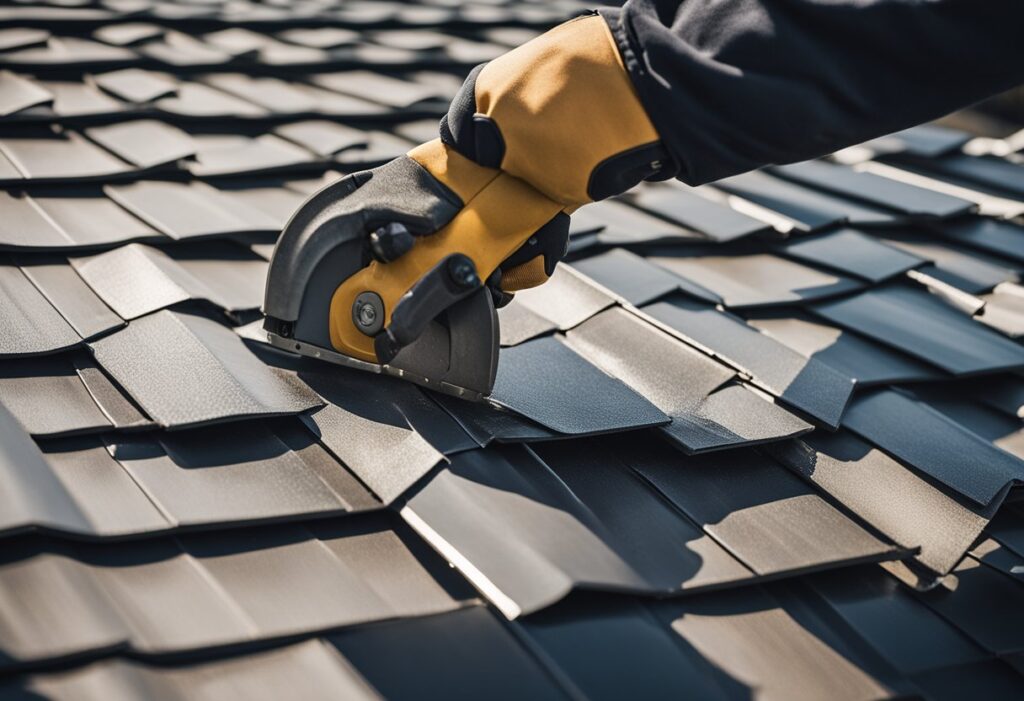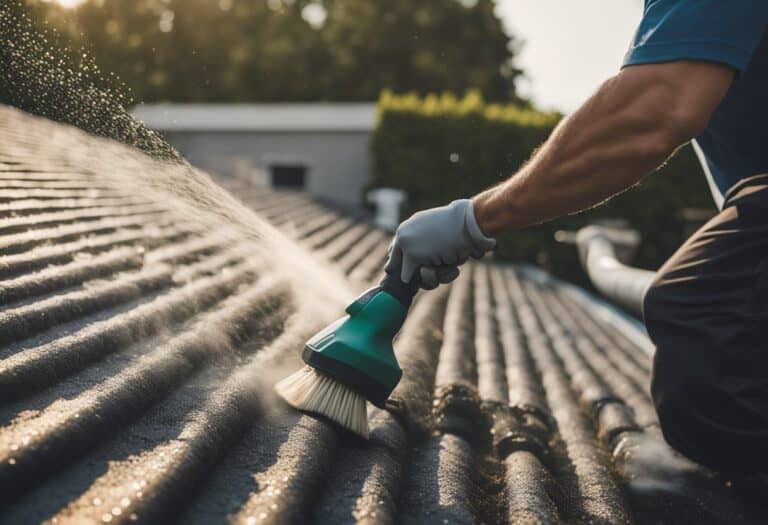Metal shingles are a popular roofing option for many homeowners who want the durability and longevity of metal roofing, but also desire a more traditional look. These shingles are made from various types of metal, including aluminum, copper, and steel, and come in a variety of colors and styles. They are designed to mimic the look of traditional asphalt shingles, slate, or wood shakes, but with the added benefits of being more durable, energy-efficient, and environmentally friendly.

One of the biggest advantages of metal shingles is their durability. They are highly resistant to weathering and can withstand extreme weather conditions, such as heavy rain, snow, and wind. Additionally, metal shingles are fire-resistant, which can provide added peace of mind for homeowners.
Another benefit of metal shingles is their energy efficiency. They reflect the sun’s rays, which can help to reduce cooling costs during the summer months. This can be especially beneficial in warmer climates where air conditioning costs can be high. Additionally, metal shingles are often made from recycled materials, which can make them a more environmentally friendly option compared to traditional roofing materials.
Benefits of Metal Shingles

Metal shingles are becoming an increasingly popular roofing option for homeowners due to their durability, energy efficiency, aesthetic variety, and environmental impact. In this section, we will explore the benefits of metal shingles in detail.
Durability and Longevity
One of the most significant benefits of metal shingles is their durability and longevity. Metal shingles are made from high-quality materials that are resistant to extreme weather conditions, such as hail, wind, and rain. Metal shingles can last up to 50 years or more, which is significantly longer than traditional asphalt shingles that typically last between 15 to 20 years.
Energy Efficiency
Metal shingles are also energy-efficient, which can help homeowners save money on their energy bills. Metal shingles reflect solar heat, which can keep the interior of the home cooler during the summer months. This can reduce the need for air conditioning, which can save homeowners a significant amount of money on their energy bills.
Aesthetic Variety
Another benefit of metal shingles is their aesthetic variety. Metal shingles are available in a wide range of colors, textures, and styles, which can complement any home’s architectural style. Homeowners can choose from metal shingles that mimic the look of traditional roofing materials, such as slate, clay, and wood, or they can opt for more modern and contemporary styles.
Environmental Impact
Finally, metal shingles are environmentally friendly. Metal shingles are made from recycled materials, and they can be recycled again at the end of their lifespan. This reduces the amount of waste that ends up in landfills and helps to conserve natural resources. Additionally, metal shingles are energy-efficient, which can help to reduce the homeowner’s carbon footprint and contribute to a more sustainable future.
In conclusion, metal shingles offer many benefits to homeowners, including durability, energy efficiency, aesthetic variety, and environmental impact. Homeowners who are considering a new roof should consider metal shingles as a viable option.
Installation Process

Preparation
Before starting the installation process, it is essential to prepare the roof surface by removing any old shingles, nails, and debris. The roof deck should be clean, dry, and smooth. It is recommended to install a waterproof underlayment to prevent any leaks. The underlayment should be installed starting from the eaves and moving upwards, ensuring that each layer overlaps the previous one by at least 6 inches.
Tools and Materials
The following tools and materials are required for the installation process:
- Metal shingles
- Starter flashing or gable
- Roofing underlayment
- Drip edge flashing
- Roofing nails
- Roofing screws
- Circular saw
- Roofing nailer
- Hand seamer
- Drill/driver
- Safety glasses
Installation Techniques
The installation process should start with half a shingle, or in accordance with the metal shingles installation manual, which should be system-specific. The first shingle should be placed at the left of the starter flashing or gable. Experts recommend working diagonally and raising each row of shingles gradually.
Each metal shingle should be fastened with roofing nails or screws, depending on the manufacturer’s instructions. The nails or screws should be placed in the flat area of the shingle, and not in the raised portion. It is important to ensure that the shingles are aligned and straight.
The metal shingles should be cut to size using a circular saw, and any sharp edges should be filed down to prevent injury. The shingles should be installed starting from the eaves and moving upwards, ensuring that each shingle overlaps the previous one by at least 1 inch.
In conclusion, the installation process for metal shingles requires proper preparation, the right tools and materials, and following the manufacturer’s instructions. With these steps in mind, homeowners can install metal shingles on their roofs with confidence.
Your usage limit has been exceeded. Please buy a plan or






